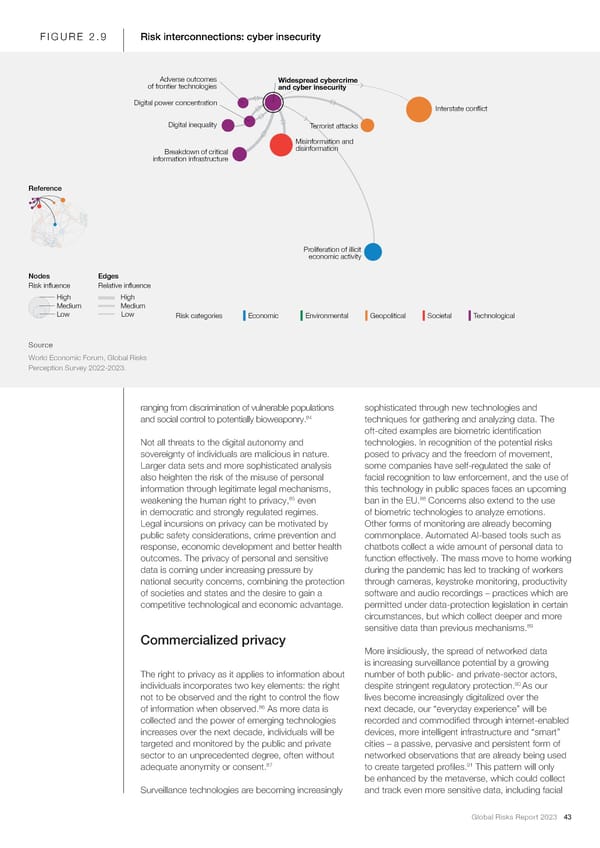FIGURE 2.9 Risk interconnections: cyber insecurity Adverse outcomes Widespread cybercrime of frontier technologies and cyber insecurity Digital power concentration Interstate conflict Digital inequality Terrorist attacks Misinformation and Breakdown of critical disinformation information infrastructure Reference Proliferation of illicit economic activity Nodes EdgesEdges Risk influence Relative influence High High Medium Medium Low Low Risk categories Economic Environmental Geopolitical Societal Technological Source World Economic Forum, Global Risks Perception Survey 2022-2023. ranging from discrimination of vulnerable populations sophisticated through new technologies and 84 and social control to potentially bioweaponry. techniques for gathering and analyzing data. The oft-cited examples are biometric identi昀椀cation Not all threats to the digital autonomy and technologies. In recognition of the potential risks sovereignty of individuals are malicious in nature. posed to privacy and the freedom of movement, Larger data sets and more sophisticated analysis some companies have self-regulated the sale of also heighten the risk of the misuse of personal facial recognition to law enforcement, and the use of information through legitimate legal mechanisms, this technology in public spaces faces an upcoming 85 88 weakening the human right to privacy, even ban in the EU. Concerns also extend to the use in democratic and strongly regulated regimes. of biometric technologies to analyze emotions. Legal incursions on privacy can be motivated by Other forms of monitoring are already becoming public safety considerations, crime prevention and commonplace. Automated AI-based tools such as response, economic development and better health chatbots collect a wide amount of personal data to outcomes. The privacy of personal and sensitive function effectively. The mass move to home working data is coming under increasing pressure by during the pandemic has led to tracking of workers national security concerns, combining the protection through cameras, keystroke monitoring, productivity of societies and states and the desire to gain a software and audio recordings – practices which are competitive technological and economic advantage. permitted under data-protection legislation in certain circumstances, but which collect deeper and more 89 sensitive data than previous mechanisms. Commercialized privacy More insidiously, the spread of networked data is increasing surveillance potential by a growing The right to privacy as it applies to information about number of both public- and private-sector actors, 90 individuals incorporates two key elements: the right despite stringent regulatory protection. As our not to be observed and the right to control the 昀氀ow lives become increasingly digitalized over the 86 of information when observed. As more data is next decade, our “everyday experience” will be collected and the power of emerging technologies recorded and commodi昀椀ed through internet-enabled increases over the next decade, individuals will be devices, more intelligent infrastructure and “smart” targeted and monitored by the public and private cities – a passive, pervasive and persistent form of sector to an unprecedented degree, often without networked observations that are already being used 87 91 adequate anonymity or consent. to create targeted pro昀椀les. This pattern will only be enhanced by the metaverse, which could collect Surveillance technologies are becoming increasingly and track even more sensitive data, including facial Global Risks Report 2023 43
 2023 | Global Risks Report Page 42 Page 44
2023 | Global Risks Report Page 42 Page 44